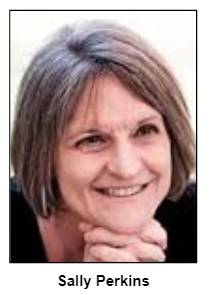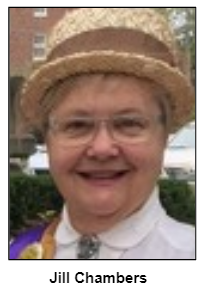Jan 24, 2020
(January 18, 2020) The upcoming 100th anniversary of women's voting rights is certainly a reason to celebrate, but the history made in 1920 was the result of a long, arduous struggle, with setbacks, conflicts and crusaders who would not give up.
All of that was true both nationally and in Indiana, so Hoosier History Live is exploring an array of aspects of the women's suffrage movement that led up to the ratification of the 19th Amendment on Aug. 26, 1920.

That's when the Indiana General Assembly approved suffrage legislation and nearly 40,000 Hoosier women registered to vote - only to have the act swiftly struck down by the courts before the women could cast ballots.
In Indiana, historians point to the tiny town of Dublin in Wayne County as the birthplace of women's suffrage. The first women's rights convention in the state was held there in 1851, three years after a landmark national convention in Seneca Falls, N.Y.
The Indiana Women's Suffrage Centennial, a statewide network of women's and history organizations, is organizing a year-long series of events and programs to commemorate various milestones including Jan. 16, 1920, when Indiana became the 26th state to adopt the 19th Amendment.
For this show, Nelson is joined in studio by two guests:
- Indianapolis-based storyteller Sally Perkins, whose presentation about the suffrage movement, "Digging in Their Heels," is popular with civic groups, educators and others. She will share insights about women who felt left behind by suffrage (including African-Americans), why states in the West tended to be among the first to grant voting rights to women, and other aspects of the crusade that often are overlooked.
- And Jill Chambers, president of the Indiana Women's History Association and a member of the Indianapolis Propylaeum, a historic hub for women's advocacy. The Propylaeum, along with Indiana Humanities, the Indiana Historical Society and the Indiana Historical Bureau, are among the organizations involved with the Indiana Women's Suffrage Centennial.

Events and programs commemorating the suffrage centennial and related topics include Be Heard: Women's Voices in Indiana, an exhibit that opened Jan. 11 at the Indiana History Center.
Elsewhere in the state, events include a reception at the Monroe County History Center in Bloomington that kicks off a year-long exhibit about the 19th Amendment. In South Bend, history lovers enjoyed "Secure the Vote," an exhibit at the University of Notre Dame School of Law.

A marker from the Indiana Historical Bureau stands today on the site of the convention, which resulted in an advocacy group that eventually became known as the Indiana Woman's Suffrage Association.
During our show, guest Sally Perkins discusses what she calls the "second generation" of suffragists. "The second generation had new ideas about strategy," Sally says, noting many of them observed the efforts of crusaders for women's rights in Great Britain.
Also during our show, Sally shares insights about the role of Prohibition in women's suffrage. She describes the advocacy for Prohibition among many suffragists as a "double-edged sword" for the movement:
"It convinced many conservative women to begin supporting the movement, but also stirred up a strong anti-suffrage coalition among those in the brewing, farming, banking and railroading industries, among others."